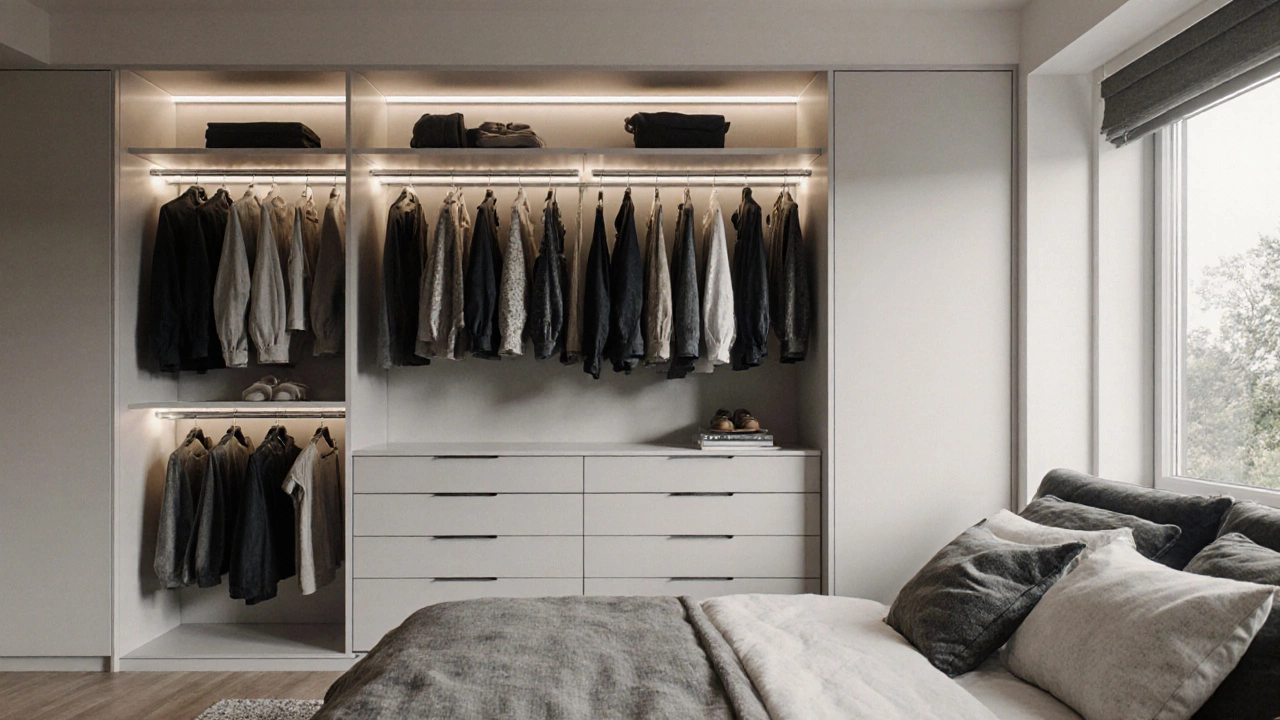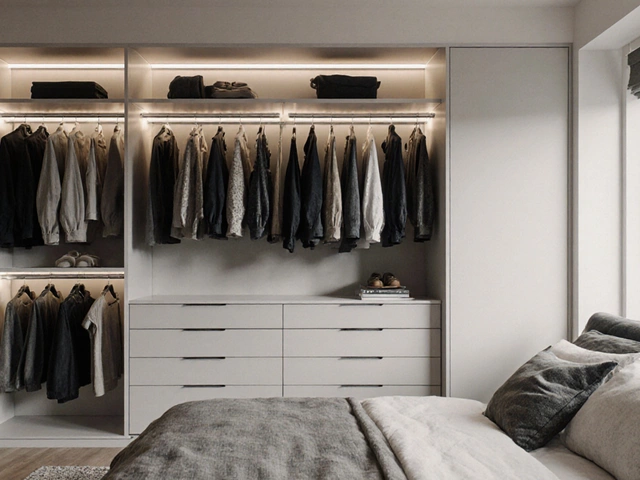American Wardrobe: Styles, Features, and How to Care for It
When you think of an American wardrobe, a large, freestanding wooden storage unit designed for clothes and household items, often built with solid timber and traditional joinery. Also known as a chest of drawers wardrobe, it’s the kind of piece that doesn’t just hold your clothes—it holds history. Unlike built-in closets or flimsy particleboard units, an American wardrobe is built to last generations. You’ll find them in old farmhouses, restored cottages, and even modern lofts where people want real wood, real weight, and real durability.
What makes an American wardrobe different? It’s the materials and the craft. These pieces are usually made from oak, pine, or walnut—hardwoods that don’t warp easily. The drawers slide on wooden runners, not plastic wheels. The doors hang on heavy hinges, not cheap metal brackets. You won’t find glued joints here; it’s mortise and tenon, dovetail, and hand-finished surfaces. This isn’t mass-produced furniture. It’s made by people who know how wood behaves over time. And that’s why you’ll still see them in homes today—not because they’re trendy, but because they work.
These wardrobes aren’t just about storage—they’re about storage solutions that adapt. Many have built-in shelves, pull-out trays, or hidden compartments. Some even double as dressers or have mirrored doors. If you’ve got an old one, you’re not just keeping furniture—you’re keeping a system designed for slow living. You don’t need to rush. You open the door, pull out a drawer, and everything’s right where it should be. No more hunting through plastic bins or struggling with sliding doors that stick.
And if you’re thinking about buying or restoring one, know this: it’s not just about looks. A well-maintained American wardrobe can last 100 years or more. The key? Keep it dry, avoid direct sun, and polish it with natural wax once a year. Don’t use harsh cleaners. Don’t force stuck drawers. Let the wood breathe. If the hinges creak, a drop of oil fixes it. If the finish fades, a light sand and re-oil brings it back. These aren’t fragile antiques—they’re tough, practical tools that got better with age.
You’ll find plenty of posts here about how to protect furniture during storage, how to refinish old wood, and how to choose pieces that fit real lives—not just Instagram feeds. Whether you’re restoring a 1920s wardrobe you found at a flea market or just wondering why your new closet doesn’t feel the same, the answers are here. These aren’t just articles. They’re the kind of tips that help you keep something meaningful alive.
What Is the American Name for Wardrobe?
In the U.S., the word for a clothing storage unit is 'closet'-not wardrobe. Learn why the terms differ, how homes are built differently, and what to call each type of storage when shopping or moving.
full article




